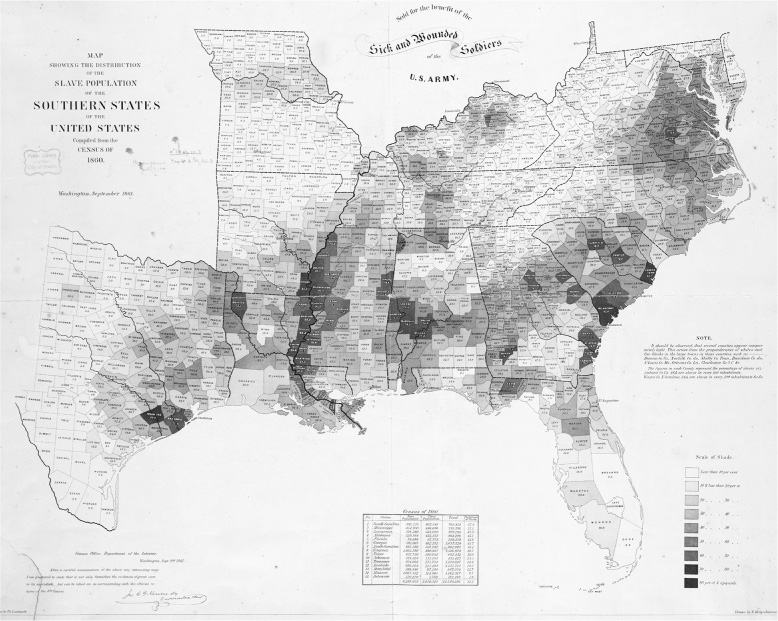America in the 1850sSlavery and Sectional Animosity |
Was there a center to the West? |
Cincinnati, Louisville, Indianapolis, and Detroit all coveted the title, but things were headed in Chicago’s direction. In 1860, the Windy City had 109,260 inhabitants and was already receiving the largest share of the agricultural wealth of the Western states.
Chicago benefited both from its position on the Great Lakes and its relative proximity to the Mississippi River. Then, too, it had ambitious and aggressive politicians—Stephen Douglas notable among them—who relentlessly promoted the place. Their outsized descriptions of Chicago may have led to its being named the “Windy” City.

This map shows the the distribution of slaves in the South in the year 1861.
